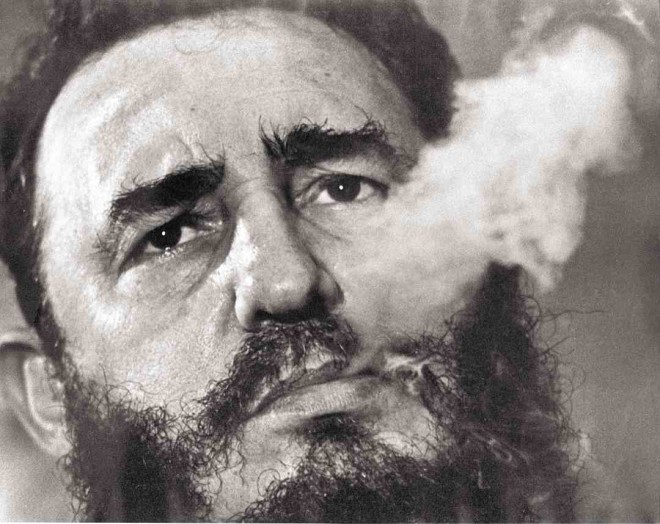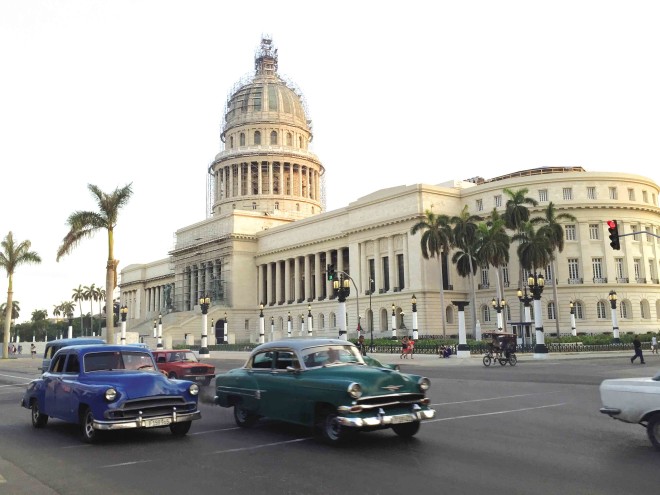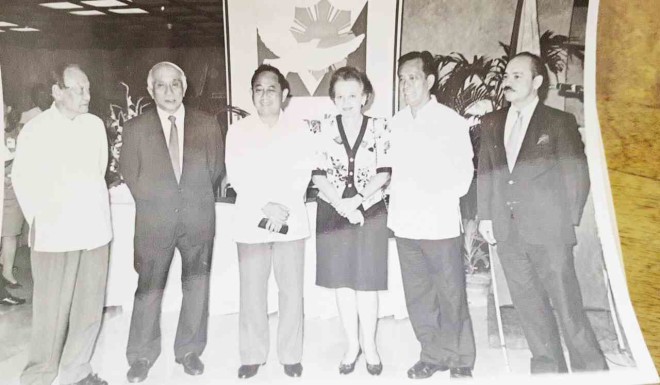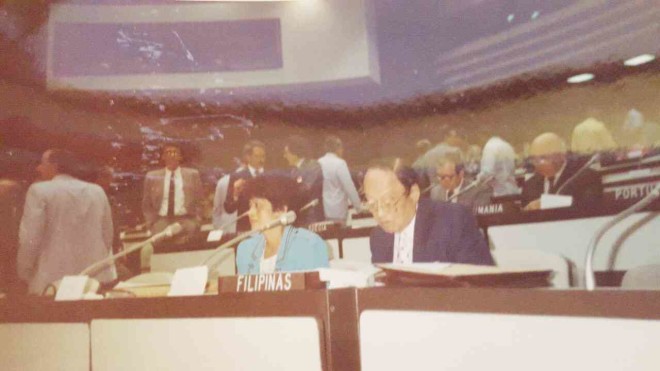
The passing away of the quintessential Cold War warrior, Presidente Fidel Ruz Castro, at the venerable age of 90 on Nov. 25 brought back my own flashback of attending a meeting of the Non-Aligned Movement (NAM) on Disarmament in Havana, Cuba, in 1988.
I was a humble Second Secretary in the Philippine Mission to the United Nations in New York assigned to the First Committee (on Issues of Peace and Security). I had been also a UN Disarmament Fellow in 1987, when the topic of nuclear disarmament dominated peace and security issues.
It was, therefore, in the line of duty when I was suddenly informed that I would be accompanying Undersecretary Jose D. Ingles to a NAM meeting in Havana from May 4 to 6 of that year.
In the Department of Foreign Affairs (where I worked for 35 years), one is inured to such surprises and I met this unexpected assignment with sangfroid, not quite realizing the unique experience of possibly seeing or meeting Fidel Castro himself in the epicenter of the Latin American Left.
This simply meant work for me, as in helping prepare the statements of the Philippine delegation at the NAM meeting and acting as an aide to its main delegate, no less than Undersecretary Ingles himself.

Naturally, there were no direct flights from the US to Cuba at that time and we would have to go through Canada or Mexico to connect to Havana. Although the distance between the two countries is just 171 kilometers, the Cold War had made this trek something of an epic journey.
Unlike many of the delegates who attended this conference, the Philippines had the good fortune of actually having an embassy in Havana, then under the leadership of Ambassador Ophelia Gonzalez with her Deputy Erlinda F. Basilio (who was later to end her career as our top envoy to China).
Part of the embassy staff then was my colleague Edgardo Manuel (later to become our ambassador to Poland), who was consul and Third Secretary.
Cadillacs
In recollection, Havana then reminded me of pictures that I had seen of prewar Manila, with a Malecon or boulevard that beribboned the corniche extending along its bay (similar to Roxas Boulevard) as well as an inner Hispanic city with a fortress that could have been Intramuros and Fort Santiago.
After all, the Philippines and Cuba had had a shared history, right down to revolt against Spain, the Spanish-American War and conquest by the United States.

What made it different from Manila was the proliferation of vintage cars dating back to the early ’60s Cadillacs, Fords, Oldsmobiles and Chevys which had been the top models when the American economic embargo had been imposed on the island.
Like Filipinos, the Cubans knew how to make innovative repairs when the spare part was not available and the automobiles had the look of valued treasures on which time, attention and love had been lavished.
Architecture varied from the colonial buildings in the city center with the cathedral that had once housed Christopher Columbus’ bones to the university building whose cupola was the twin of Columbia University’s tower in New York, to the elaborate upper class mansions along the bay.
Our embassy was also located in the Vedado, roughly akin to our Makati villages with once fashionable houses belonging to the elite that had fled the Revolution.

When I asked Counselor Linda Basilio whom the embassy rented from, she informed me that it was from the Cuban government but that the person who had owned it lived in a villa just next door. Apparently, there were still those who chose to stay and, in effect, support Fidel Castro. Either that or they had been obliged by circumstances to stay in this Communist idea of utopia.
Conga, rhumba
The delegations were housed in the hotels constructed before 1959, such as the Nacional, which still presented dance troupes featuring the conga, the rhumba and the mambo.
One spectacular detail I remember that took place was that the strong wind and rain, in Cuba’s Caribbean hurricane season, broke the enormous plate glass window above the dance floor, crashing down on it and sending the dancers scampering for safety. Incredibly, no one was hurt, demonstrating equal treatment by Providence.
Still, the cultural scene seemed to be lively, with art galleries featuring local artists; film showings and street parties. There was an exhibit of old silver in glass cases in a plaza of the Old City and I was impressed by the fact that no one seemed to be guarding it.
Irrepressible
Not even a Revolution could smother the irrepressible Cuban spirit, in fact it probably enlivened it and gave it a quicker step. I never heard so many versions of “Guantanamera” and sipped their best rum in the Hemingway bars of the Floridita and the Bodiguita del Medio.
The Cubanos also kept a room in a house where Hemingway had stayed the way he had left it on his last visit, complete with a vintage typewriter. Paradoxically, this American appeared to be revered by the Cubans, just as probably as he had adored them during his stays there.
Baseball still remained one of their favorite games, attesting to a residual Yankee influence. It reminded me that Havana had been one of the playgrounds of the Caribbean for the Florida elite, not least Papa Hemingway.
The biggest gains that had been made under the Castro regime were in education and healthcare. Although one could note that life was very basic and clothing very simple, no one seemed to be starving and no one was subservient to tourists and visitors.
The Cubans had also rolled out the red carpet for us by opening a shop where we could purchase the famed Cuban cigars (I now regret that I had not bought a lifetime supply) as well as vintage items like picture frames and bibelots that I imagined were the heirlooms of some departed aristocrats.
The highlight of the NAM conference was the keynote address of President Castro himself. The NAM Conference took place in a building whose lobby was landscaped to look like the jungles of the Sierra Madre mountains, where Castro had taken refuge during his fight against the Batista regime.
Comrade Fidel Castro was—as the cliché went—tall, dark and handsome and, although graying at the temples, projected robustness and vigor. One could expect that he would thus live to be very old, outliving all of his enemies, and it would, therefore, not be a surprise that he grew to be a novenarian.
It was obvious that his people loved and protected him, with the obvious exception of those who had fled Cuba. The Cuban revolution was almost in their DNA and would survive whatever changes would come in the future. Raul Castro was still a shadow figure beside his famous brother. Che Guevara lived only in the iconic Andy Warhol lithograph blowup that boldly adorned a major plaza.
The NAM Conference had to be extended by several hours due to the inability of all delegations to agree to the wording of the Final Document, all of 16 pages long and to be known officially as the Havana Appeal.
It was the archetypical NAM summary of a “third way” between the two Superpowers’ stands, with a bootless plea for a reduction in nuclear weapons. Nobody knew then that the Berlin Wall would crumble not long after.
Powerful voice
Finally, the Comandante Fidel Castro addressed us. No one expected that his discourse would last about four hours and I was equally impressed by his lady interpreter who gave a verbatim translation of his remarks, with appropriate hand gestures approximating his.
Still in the relative prime of his life (in his 60s), he still had a powerful voice and a preternatural presence.
I had accidentally brought in my camera into the meeting room, where it was forbidden to bring photo apparatuses. It had miraculously escaped the surveillance of the guards. For a while, I contemplated taking a sneak shot, but then feared a diplomatic incident.
Diplomat rather than journalist, I missed taking a historic photo at that occasion.
I would guess that nearly all delegation members were as benumbed and exhausted as I in the wee hours when the NAM Conference came to an abrupt end.
We were whisked off to the airport, I fell into a deep sleep in the airplane seat and, by the time I woke up, we were landing at the JFK International Airport.
The trip to Havana had all the transparency and luminosity of a dream. I had had the unique experience of seeing Fidel Castro and listening to his famously kilometric oratory in his own homeland. Venceremos! —CONTRIBUTED
The author is a retired ambassador, a career diplomat of 35 years, served as envoy to South Africa (2003-2009) and Italy (2011-2014) with assignments to the Philippine Mission to the UN in New York, Myanmar, Mexico and Chile. He was a UN Disarmament Fellow in 1987 and published a major source book titled “In the National Interest: The Philippines and the UN-Issues of Disarmament, Peace and Security.”








































